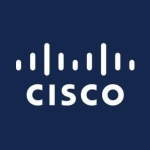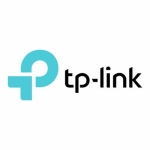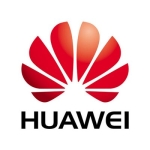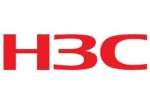What is our primary use case?
The primary use case is for Pro AV products, so multicast video and multicast audio passing across an AV system. Audio video is getting very network-based, so we are using it for network transport and multiple VLAN communication.
How has it helped my organization?
We work with a large variety of project sizes. This solution has come in to help our company in the mid-project size range, where you have a customer who needs two or three switches but doesn't have the budget for an enterprise grade switch that is $10,000 to $20,000. The NETGEAR product line fits great in that medium project size where you need to have some of those enterprise capabilities, or a switch with a bit more power behind it, but you don't necessarily have a huge budget. At the same time, it can also scale up to those large projects.
A few of our projects have used NETGEAR switches as a core for video walls where we do a lot of Crestron NVX, which is a multicast video transport. They have used the NETGEAR switch as a core to pass that traffic over to a video wall with multiple streams. In most of our projects, we'll do one to two switches. The flexibility with the M4300 is they have anything from a smaller 12 to 24 port switch up to a chassis based 96 port switch. In our large projects, we typically go for the chassis based switch, which has up to 96 ports. That covers everything we need. Normally, there are one to two switches in different projects.
We're using 10 Gigabit switching in a limited respect for interswitch communication. That is our primary use case for 10 Gigabit or larger connectivity where essentially we have multiple switches connected to each other and need to pass multicast video or audio from one switch to another. We do have a few products out there that are using that for multicast video transport. From a switch perspective, it's been very positive and stable. Some of the other products have had issues, but that's not related to NETGEAR. They are passing on the high bandwidth traffic without any issues.
What is most valuable?
I find the flexibility they offer to be the most valuable feature along with the wide range of features that they have for its price.
Out-of-the-box, it works for our main use case. When passing multicast video across the network, our technicians don't have make any changes. Then, if we do need to make configuration changes for a custom scenario, the web interface is user intuitive so it's easy to use and change.
My experience with the High-Bandwith AV over IP functionality so far has been very positive. I haven't run into many issues with their switches passing a lot of high bandwidth communication across the switch. We have had projects that are pretty small and others with 80-plus devices. Regardless of the size, it works once setup and is stable too.
Expandability is an easy feature for these switches that works fairly well.
What needs improvement?
An area for improvement would be creating a wizard that can do a lot of common stuff. Instead of having some manual configuration for common features, they may want to have a single wizard that could be put in place which would let you walk through creating multiple VLANs and different routes between VLANs in a wizard. Then, you wouldn't have to dig in so deep. This would benefit a lot of our technicians, though if you have a lot of networking experience then the settings make a lot of sense. The very common settings are easy to use. However, some of the more advanced concepts are where it gets complicated, so a wizard for users would make those easier. Therefore, the only area they need to improve on is creating a wizard to help with some of the more advanced features.
For how long have I used the solution?
I've been working with the M4300 Switch Series for about seven months. I started working on and testing them for our company last July.
What do I think about the stability of the solution?
As long as the firmware is up-to-date on the latest version available, SDVoE installation performance has been very positive. We have run 4K video from Crestron NVX across these switches and haven't seen any strange latency or delay issues. It has been very stable once setup. We are starting to roll this out to some of our medium-sized projects, which has been a very positive experience. There have been no major issues that we've run into.
It is definitely important to get the switches up to the latest firmware that is available. We did run into some issues early on in older firmware patches with multicast video and audio. NETGEAR support identified the issue right away. It was fixed in the software upgrade and we've had very good success in the latest firmware. For stability, just make sure you're on the latest firmware, then you should be good.
What do I think about the scalability of the solution?
Scalability is good and beneficial. They have their larger chassis based switch, which goes up to 96 ports where you can stack multiple of those other switches together.
In our smaller projects, we may have two to four displays. In some of our larger projects, e.g., video wall or some of our other locations, I've heard that we've had up to 40 to 50 different displays.
We now have 21 different offices spread out across the country with installation technicians at each site. Each region will have their own different projects. Most of the time the install techs (or design engineers) will handle the switch configuration locally. Therefore, a lot of people in our company get their hands into networking. We have another central resource and me who are more specialized. There is a group of us who are in the higher tier networking in case we run into projects that are more complicated. I've worked on 10 to 15 projects with NETGEAR switches, but I know our other offices have done more. We deal with NETGEAR switches quite a bit. It's a mix of installation technicians and design engineers. In my case, I'm a UC deployment engineer with a networking background and am working on some of the larger networking projects.
How are customer service and technical support?
NETGEAR support is really good. They have helped us a lot and respond quickly. In most cases, if you get too deep into switch configuration, it is better to factory reset it and start from scratch. If you've over configured the switch or configured something incorrectly, that's the first step NETGEAR support will have you do. Don't overthink the configuration because there are a lot of options that you can go into the switch. Most of what you need isn't in-depth configuration.
We haven't had a lot of support issues. Once the NETGEAR Switches go in, typically they run and work. We are not doing a lot of return service work.
How was the initial setup?
For the basic features, it's pretty straightforward to set up. Out-of-the-box, it just works for multicast video. There aren't any additional settings that have to be made from our technicians on it. For our primary use case, we have three different networks: video, audio, and control. It is super easy to set up different VLANs and make our configuration changes. It also has a lot of the features that an enterprise grey switch would have, but not at the cost of a Cisco or Juniper. Most of our technicians can walk through the basic setup without a lot of help, which is huge on our part.
For the Pro AV side, you definitely don't need to be an IT expert. It helps to have some IT knowledge/background, but you don't need to be an expert. Since it meets the Pro AV primary use case right out-of-the-box, this makes it easy for our smaller projects. Then, for setting up a DHCP server, creating multiple VLANs, and the typical configuration, most technically adept individuals can walk through the simple setup in an hour or two. The documentation from NETGEAR is pretty good as well. In most of our cases, you don't need to be an IT expert. When you're getting into more of the advanced features, such as quality of service and connecting to customer networks, then you definitely need a little more network background. However, that will be with any product.
If you are turning on some advanced features related to quality of service or doing routing traffic between VLANs, it is a little confusing at points, specifically the multicast running with ping. Some of those advanced features is where it does get a bit confusing because there are so many different options.
What about the implementation team?
From a network configuration standpoint, most of the time I work remotely. We have our technicians onsite installing the AV equipment, then I will connect through their PCs and go to the switch. Normally, when I'm pulled in for switch configuration projects, it is between one to three hours, depending on the complexity of the project. Smaller projects, where it's a single conference room or a couple conference rooms, that's one to two hours. When it's a larger switch or environment, typically that goes on for two to four hours. That's about half the time I normally spend with competing products.
The implementation strategy varies depending on the project. Since we have such a wide range of projects and they differ a lot, I've created a basic standard for us and we modify it from there. So our standard typically is that we have video transport on one subnet, audio transport on another subnet, and then normal communication over different devices on another. It's somewhat standardized but we do have to modify it to a certain extent.
What was our ROI?
When we spec NETGEAR projects, the time it takes to deploy it for a project is a lot less than projects where I would normally spec an Extreme Networks, Cisco Catalyst, or enterprise grade switch,. The configuration time where I'm involved in is typically about half compared to other vendors.
Another return on investment are cases where we are in a bid and have to be competitive with other AV vendors. These switches give us an additional option and a little leg up because we get more features and capacity compared to if we went with a higher grade or enterprise grade switch.
What's my experience with pricing, setup cost, and licensing?
I would give the solution an eight point five (out of 10) for price to performance. The performance is really good. It fills in a hole that other vendors have had for a while. What you can do with this switch for the price, it is hard to match using another vendor.
From a price perspective, the solution comes in higher than a small business product from their competitors. The solution is a bit higher, but it's a fraction of the cost compared to an enterprise switch. For example, a Cisco Catalyst can run approximately $13,000, where their Small Business Series may run $800 on the Cisco side. With NETGEAR, it falls in around the $1,000 to $2,000 range for most of what we use it for. Essentially, at this price point, you're getting a lot of enterprise grade features (e.g., that you would on a Catalyst) on an M4300.
Comparing the NETGEAR switches to their competitors in the enterprise space, they are on the cost-effective side. A lot of the features that they have are enterprise-centric, depending on the switch you go for. Most switches are between $1,000 to $3,000. Some of the larger switches get bigger or more costly. These are not small business class costs, but they're in that lower mid-range cost-wise. However, the features that you get are hard to match for the price.
Which other solutions did I evaluate?
It fits into the Pro AV space better than a lot of other competitors. The benefit to that is their ordering structure is super easy compared to their competitors. You have one or two SKUs and don't have to fight to ensure you have the correct licenses, extra pieces, or parts. From an ordering standpoint, this makes it super easy for our different project engineers.
We use a bunch of different vendors depending on customer preference and projects:
- I do a lot of Cisco, whether it's the Small Business Series or Cisco Catalyst product line.
- I do a little with Extreme Networks and their different product lines from switching.
- I have done a bit with Dell EMC.
They are on par with other AV switch manufacturers, e.g., Pakedge, Cisco Small Business Series, and Extreme Networks. Though, they are closer in cost to Extreme Networks. They are more in the mid-range from an AV product price, maybe a bit higher. You can't beat their features compared to other vendors in that product range and capacity. AV specific only, they are mid-range price-wise.
Pros for NETGEAR Switches:
- The price point and features that they supply/provide in their product fall into an area that's typically missed a bit by other vendors, which is huge.
- The web UI is pretty intuitive.
- It's pretty easy to set up, especially compared to some of the other vendors.
Cons for NETGEAR Switches:
- While they have all these features that you can configure, it is a double-edged sword. As you go deeper into the switch, there are so many options that it can become a bit confusing at times. For most of our projects, we don't deal too heavily with a multicast routing between switches or some of the advanced features. However, when you do get into that, that is where it gets a little confusing.
- They're not quite as heavy in the enterprise side of things. If our customers are standardized upon a particular vendor, like Cisco, it doesn't leave us any room to negotiate, and say, "We want to bring this other vendor in." E.g., NETGEAR isn't used quite as often in enterprise spaces. Most enterprise is either Cisco or Juniper.
What other advice do I have?
It's a good switch. The only recommendation that I would have is to put in a wizard for some of the more advanced features. Outside of that, I'm very happy with the product. It does fit in a hole that's typically been missed by a lot of switch vendors who are not targeting the Pro AV space, like NETGEAR is. I would rate the product between an eight point five and nine (out of 10).
We are working with NETGEAR to train our employees on the product as well as get a closer relationship with them. It is more than just buying the product. We are working with NETGEAR to help develop the product a bit as far as referring back to them what we've seen in the field. Then, they're helping to train some of our offices on how to use it.
Disclosure: PeerSpot contacted the reviewer to collect the review and to validate authenticity. The reviewer was referred by the vendor, but the review is not subject to editing or approval by the vendor.

















Chris Stowe, on behalf of NETGEAR Business, I'd like to thank you for your fair and complete review of NETGEAR m4300 switches in a ProAV Environment. Your feedback is appreciated and it certainly helps us make choices on future direction and focus of our products. Thanks for using NETGEAR and sharing your results.
-Bret D.